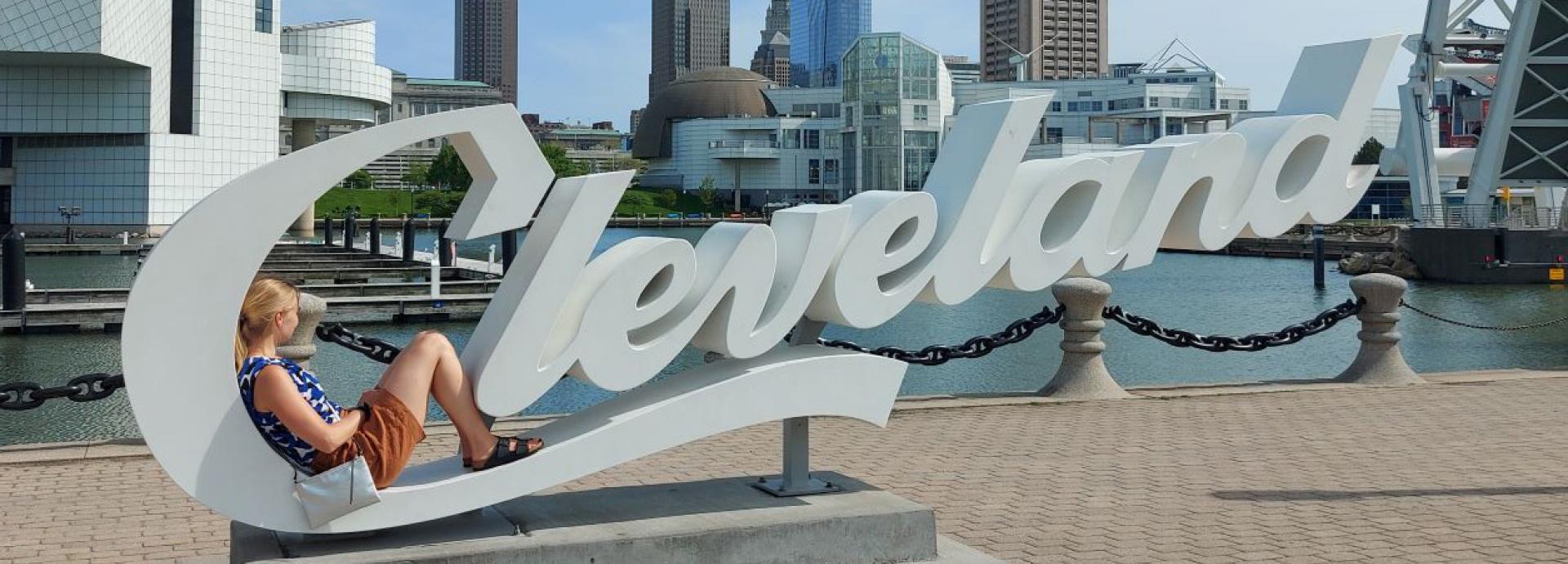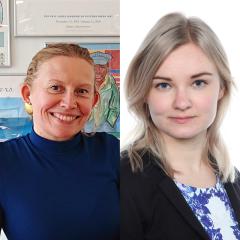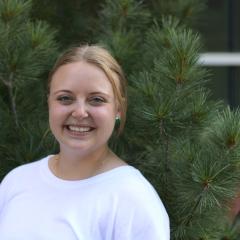

Two Finnish Fulbrighters, Tiia Kekäläinen and Pirita Tolvanen, attended the seminar in May 2022.
Pirita Tolvanen
‘Redlining’ means racist housing practices executed in the U.S. from the 1930s, a very systemic way of segregation – red marking the areas where black residents lived and therefore were deemed risky investments. The term was a new one for me.
The impacts of redlining are still visible today in Cleveland’s maps. Redlining links to hotter neighborhoods. “Tree canopy alone shows where the wealthy or the poor people live”, showed President & CEO Rich Cochran from Western Reserve Land Conservancy. Tree canopy is linked with asthma, cardiovascular diseases and other health problems. Tree loss leads to dramatic increase in human mortality. Trees are sponges, they are filters, they protect us from heat and lead - and help with energy bills.
“We’re strategically looking at the maps”, told Senior Strategist Fran DiDonato from City of Cleveland. Cleveland is a city of neighborhoods: a broad citywide approach will not be best suited. “Some neighborhoods in Cleveland are paying 25% of their income to utilities. It’s just not sustainable.” A new program has been launched in Cleveland to help low to moderate income households to own a rooftop solar system.
From bottom to top
Executive Director Kim Foreman from Environmental Health Watch was one of the influencers behind the city's climate plan 2018 with the social and racial equity focus. Her critique towards the discussions of climate policy before was poignant: "It was a little elitist, right? Or heavily focused on technology."
She gave us several examples of what it means to activate the grassroots level in climate matters. The work of Environmental Health Watch started on themes such as backyard gardening, composting and tackling illegal dumping. Their meatless cooking classes have been going on ever since 2012. In 2013 they organized the first conference on food justice, and conferences were arranged annually for several years. “It is about how you frame it and speak the language”, Foreman told.
Enrichment and my own project
In my own Fulbright project I have looked into children’s nonfiction picture books and on how they present data. Climate change is definitely a big theme in children’s nonfiction and there’s a specific type of agency promoted for children visible there.
Looking at it from my Illustrator’s visual point of view, a lot of those books seem to try and explain all at once. A lot of them end up telling the same things and asking children what they could do in their own lives, sometimes even in matters like cutting down fossil fuel emissions. There has been something in this equation I have found a little off. No matter the agency promotion; it has been top to bottom.
The bottom to top talks in Cleveland gave me new perspectives on this - the focus on talk and topics. The talk on trees, streams, backyard gardening, green streets and composting. The talk about the need for adaptive and purposeful leadership techniques and the meaning of diverse coalitions of voices – in contrast to the traditionally hierarchical cities. How the political level rarely leads the way.
In 1969 the Cuyahoga river running through Cleveland caught on fire due to its polluted state. Carl Stokes, the first black mayor of a major city in the U.S., chose to speak of the river; it affected disproportionately black residents living close to the water. He chose to use the power that he had – the media already was following him everywhere. “He didn’t probably see himself as an environmental leader; just as a leader”, DiDonato pondered.
In all its simplicity the biggest giveaway of the Enrichment seminar and those hot May days in Cleveland was the way racial and social equity and climate justice were woven together.
Tiia Kekäläinen
When getting the invitation to apply for Fulbright Enrichment seminars, I hesitated for a while. The topic, climate change, was interesting but not tied to my research that focuses on older adults' physical activity and functional capacity. In addition, participating in a seminar would require some extra paperwork, such as applying for a social security number. However, I decided to take this unique opportunity to meet other Fulbright scholars and it was totally worth it!
Enrichment for a researcher
"During the seminar, I realized that most of the covered topics were relevant to all of us regardless of our background. Effects of climate change, examples of how to prevent these effects, and issues with inequality are something that we all should be aware of."
The Fulbright Enrichment seminar was a refreshing experience for a researcher. In typical scientific meetings, you meet other experts from your own research field and choose to listen to presentations that are close to your own research. Instead of this, I got the opportunity to meet experts with various backgrounds and from completely different fields. During the seminar, I realized that most of the covered topics were relevant to all of us regardless of our background. Effects of climate change, examples of how to prevent these effects, and issues with inequality are something that we all should be aware of.
Site visits
The program of the seminar was not the same for all. We had the opportunity to choose between various site visits. These visits were perhaps the greatest experience during the seminar. On the first day, I chose to visit Rid-All Green, which is an urban farm in one of the oldest neighborhoods in Cleveland. The farm produces healthy local food, but they also train others on the work. One of the target groups is veterans for whom the training program may also be helpful in rehabilitation. On a sunny afternoon on the beautiful farm, it was easy to believe how growing plants would benefit your mental health at the same time.
On the second day, we visited a warehouse of Medwish, a non-profit organization that delivers discarded medical supplies and equipment for people in need all over the world. After a short tour of the huge storage full of different supplies from wheelchairs to vaccination needles, we got a hands-on voluntary work experience by stocktaking donated medical supplies.
Overall, the enrichment seminar was a unique opportunity to meet and network with other Fulbright scholars. Networking is rarely made this easy for you: the seminar was full of friendly people interested in meeting and talking with you. I had many funny conversations starting from the differences in gym cultures between countries to explaining what these weird ‘ä’-letters in my last name are.


